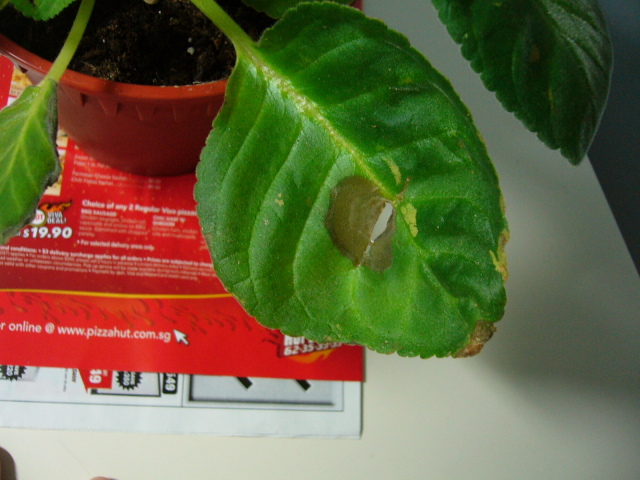Question
 gloxinia picture
gloxinia picture
This gloxinia has been attacked by mealy bugs for more than 2 weeks; problem was only detected last week. I have used quite a lot of white oil once on the leaves and soil last week. Since then, I have been getting a lot of leaves in similar condition as that shown in picture attached. Can you please kindly tell me what is the problem and what can be done to save the plant? Thank you!
AnswerThere is always a possibility that the white oil caused a burn on the leaves, but this is not really that common during the winter due to low light. I suspect that the problem is edema (also spelled oedema). This occurs when the soil is moist and the roots are taking up water faster than the leaves can use it. The cells and the leaves expand due to the water and essentially 損op?from having so much water. If many cells in the same area are damaged, you will end up with brown spots. Gloxinia is prone to having this condition in the winter. The leaves are not using very much water so the uptake rate is too high when the plant is in moist soil. I suspect that in treating for the mealybugs and trying to wash the leaves, that the soil became wetter than normal. It is also possible that the oil coating slowed the loss of water from the leaves and caused the condition.
Edema is most common in the winter and during cool and cloudy weather periods. It is more common on indoor plants than outdoor. You can reduce the problem by lowering the amount of water that you are applying to the plants. These plants should be kept on the dry side during the winter months. Reduce the humidity to less than 70% during the winter months and space out plants so that air circulation is improved. Most plants will recover from edema in the spring or summer.






